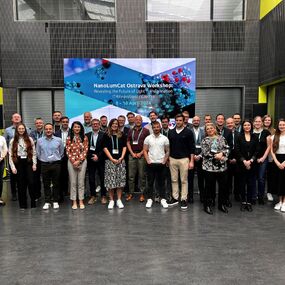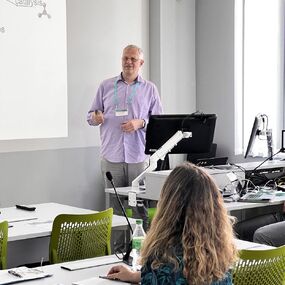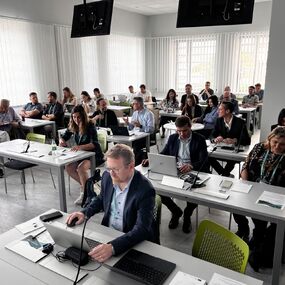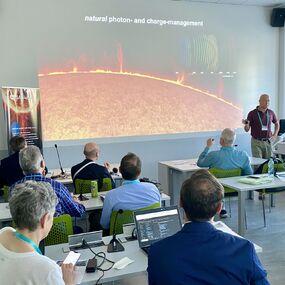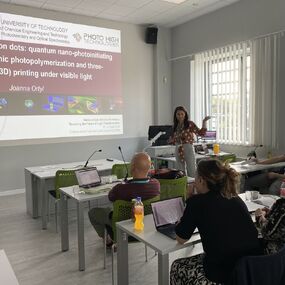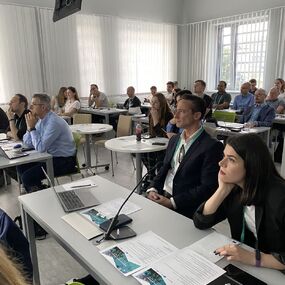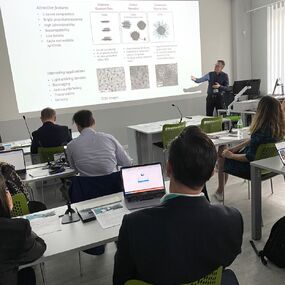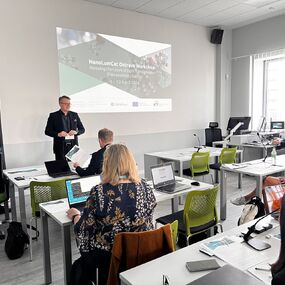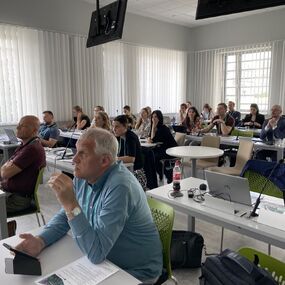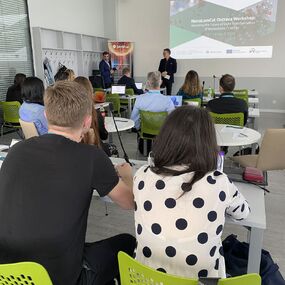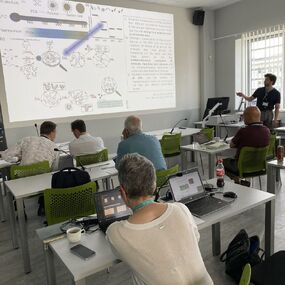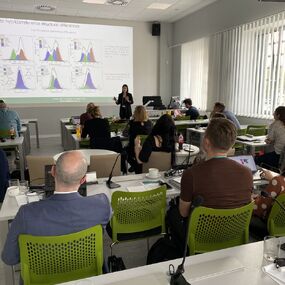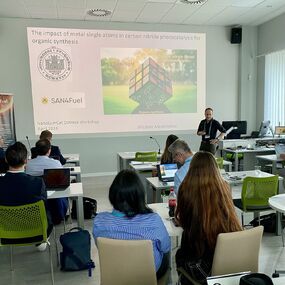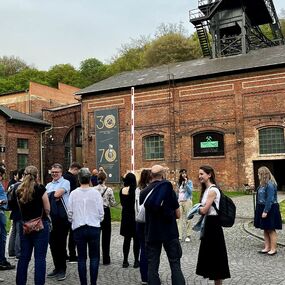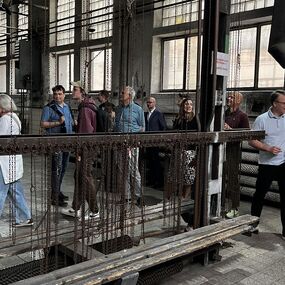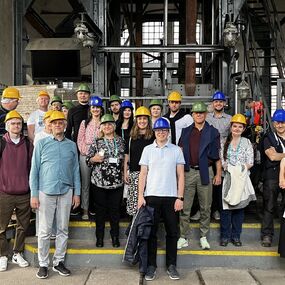The NanoLumCat Ostrava 2024 workshop brought significant findings in the field of carbon dots and single-atom catalysis for renewable energy sources. Participants learned about the latest scientific advances and discussed the possibilities of new technologies in the field of nanomaterials for sustainable development. This was one of the world's most significant meetings on this topic, and participants left with new insights and inspiration for their future work.
The workshop took place from 8–10 May at the IT4Innovations National Supercomputing Center with 39 experts from Italy, Germany, Spain, Poland, Slovakia, China, the Czech Republic, and other countries. VSB - Technical University Ostrava and CATRIN Palacký University in Olomouc joined forces to organise the scientific workshop. The event was held under the auspices of the Global Experts Programme and the SAN4Fuel project.
“I am pleasantly surprised by the interest of colleagues from all over Europe in carbon dots. During the three-day meeting, we agreed on the necessity to organise events of this format for this highly specialised community at least once a year, because sharing information and knowledge is an integral part of scientific work. During the discussions, many interesting considerations were expressed, which will definitely need to be further addressed in our research,” said one of the main organizers of the event, Michal Otyepka.
The workshop was attended by one of the world's leading scientists in the field of time-resolved spectroscopy, Dirk M. Guldi, a professor at the Friedrich Alexander University in Erlangen-Nuremberg, Germany. Guldi's primary focus is developing carbon-based materials, such as fullerenes and carbon dots, that are useful for collecting solar radiation. “I was happy to attend the NanoLumCat workshop with many friends because we share a common interest in novel carbon dots as unique materials for solar energy conversion. It was a great pleasure to participate, and we had many exciting and intriguing cross-disciplinary discussions,” said Guldi.
Chiral carbon dots were also the central topic of the lecture by Andrey Rogach, an expert on the synthesis, assembly, and optical spectroscopy of colloidal semiconductor and metal nanocrystals, their hybrid structures, and their use for energy-related applications. “I was excited to come to Ostrava again, as I am involved in a collaborative project with my good friend and colleague Michal Otyepka, and this was a very interesting workshop devoted to light emission and catalytic properties of carbon dots,” said Rogach, who is based at the City University of Hong Kong and is the central figure of the Global Experts programme's grant called Experimental and Theoretical Study of Luminophores with Chiral Carbon Dots Emitting Near Infrared Radiation at VSB-TUO.
Lectures by colleagues who are mainly involved in experiments were organically supplemented by contributions from the field of design and theoretical description of properties of carbon nanomaterials. A leading expert on the interaction of light and molecules, a professor at the University of Vienna, Leticia Gonzalez, talked about calculating the optical properties of molecules: “This workshop was a wonderful opportunity to connect people from different fields, such as theory and experiments. And we got together to contribute to finding solutions to utilize the solar light to make new renewable energies.”
In addition to lectures and discussions, the three-day programme included an IT4Innovations tour.


